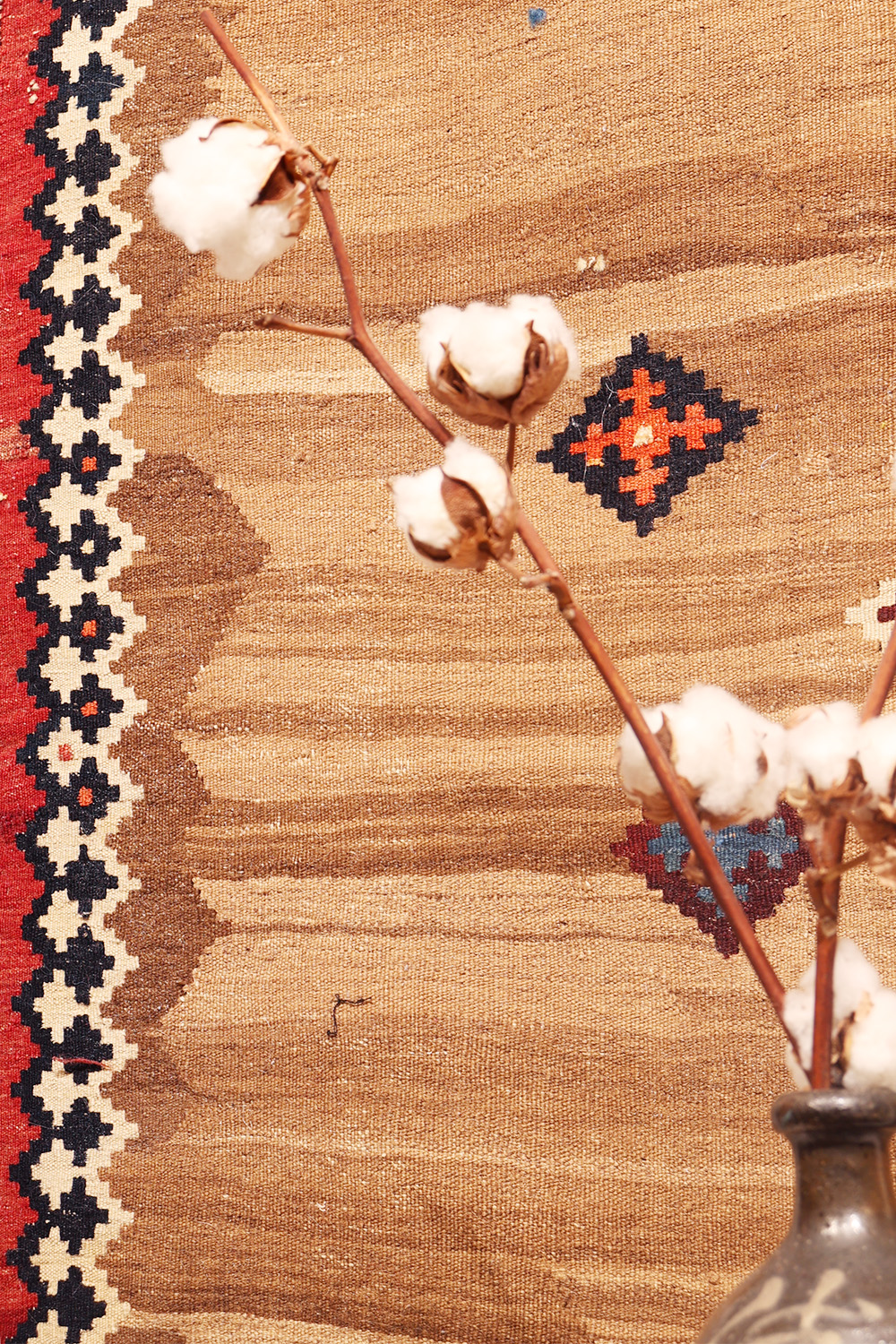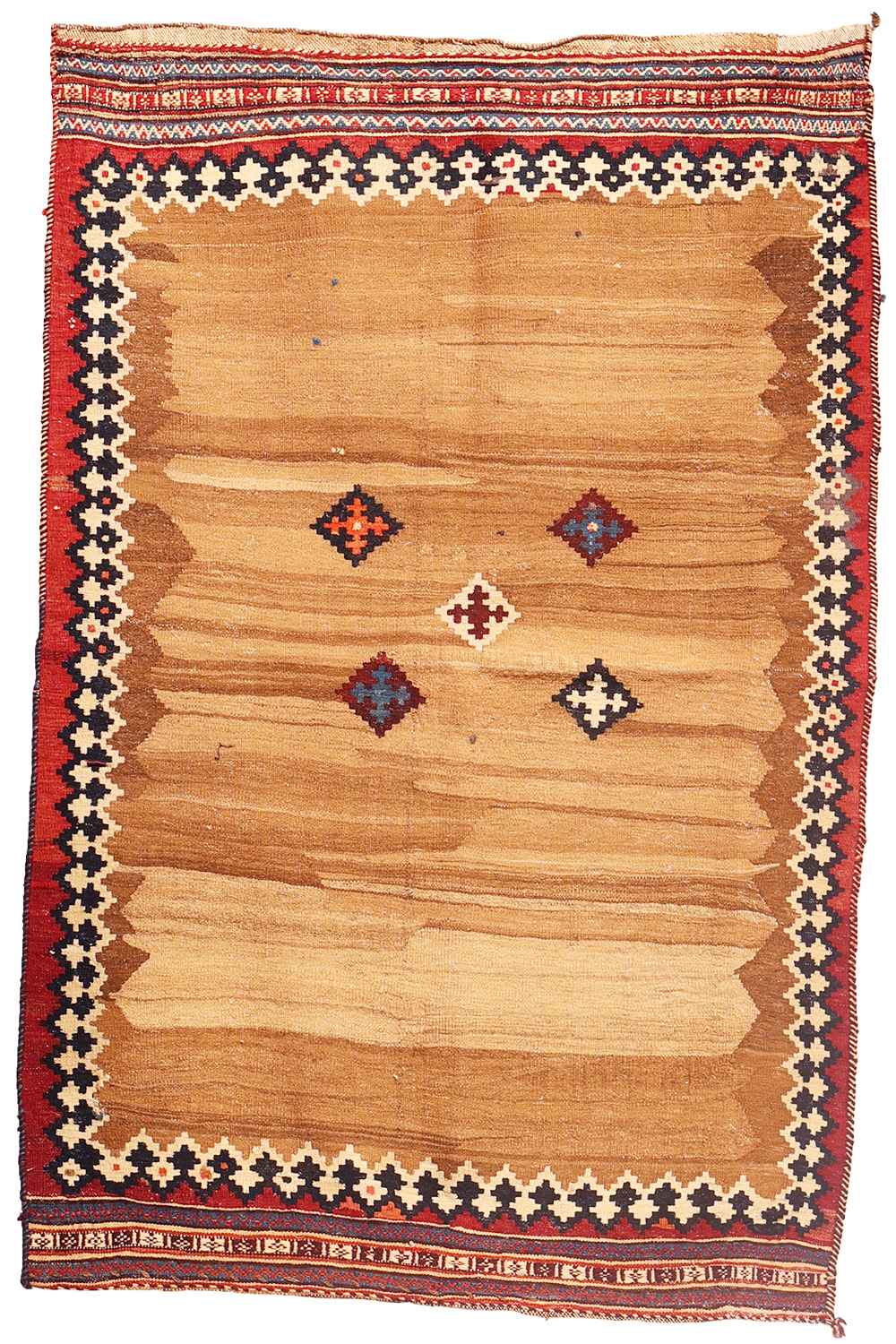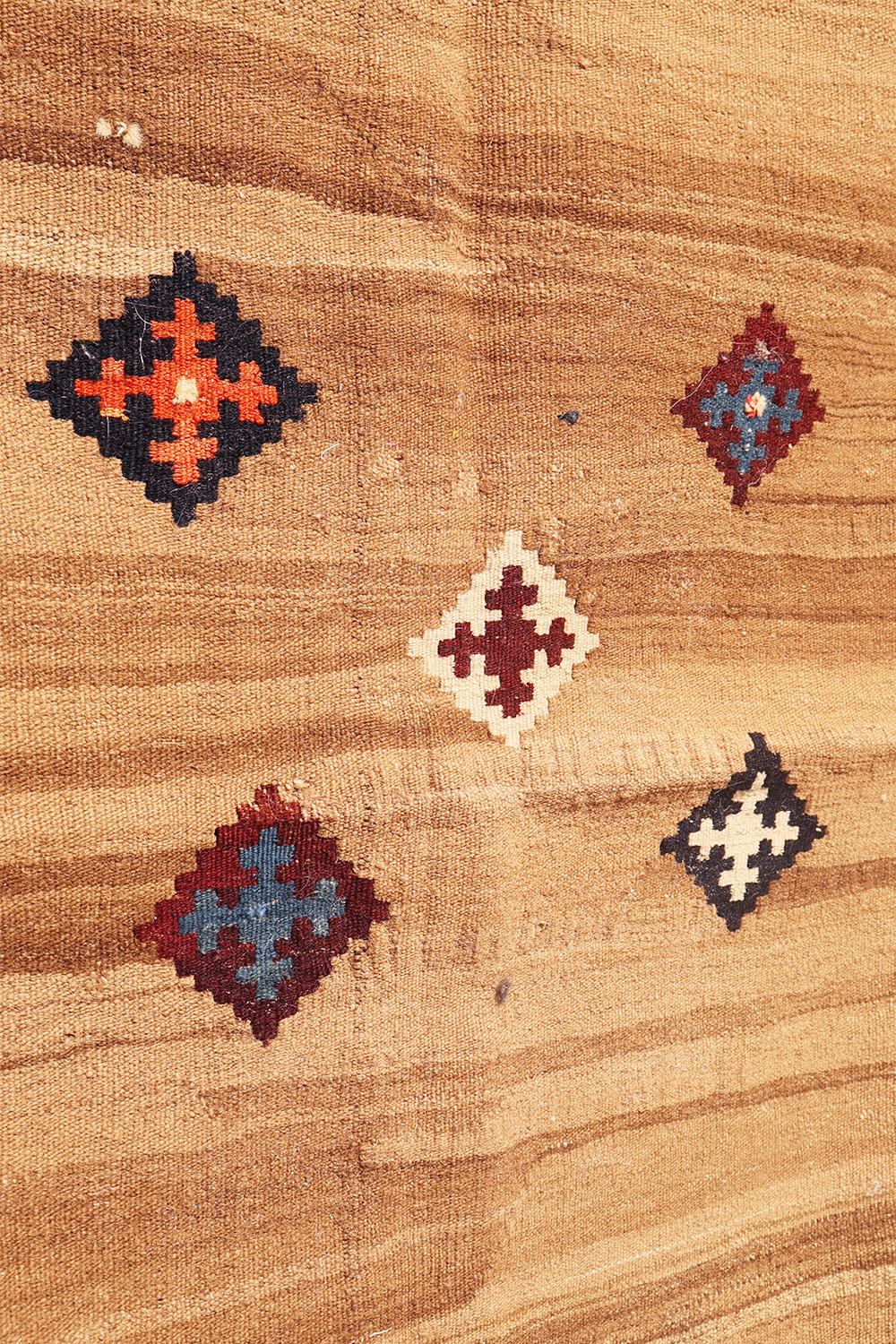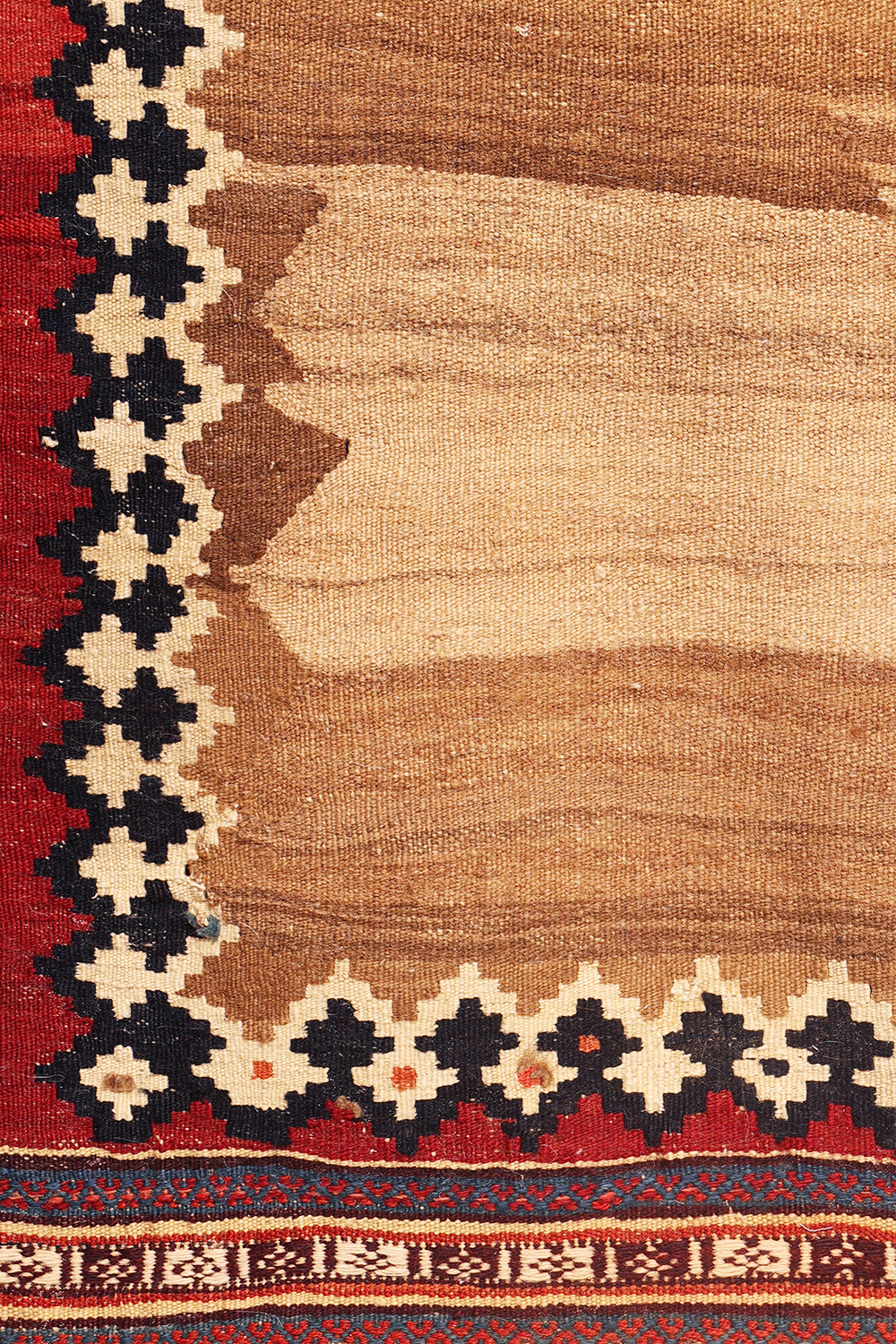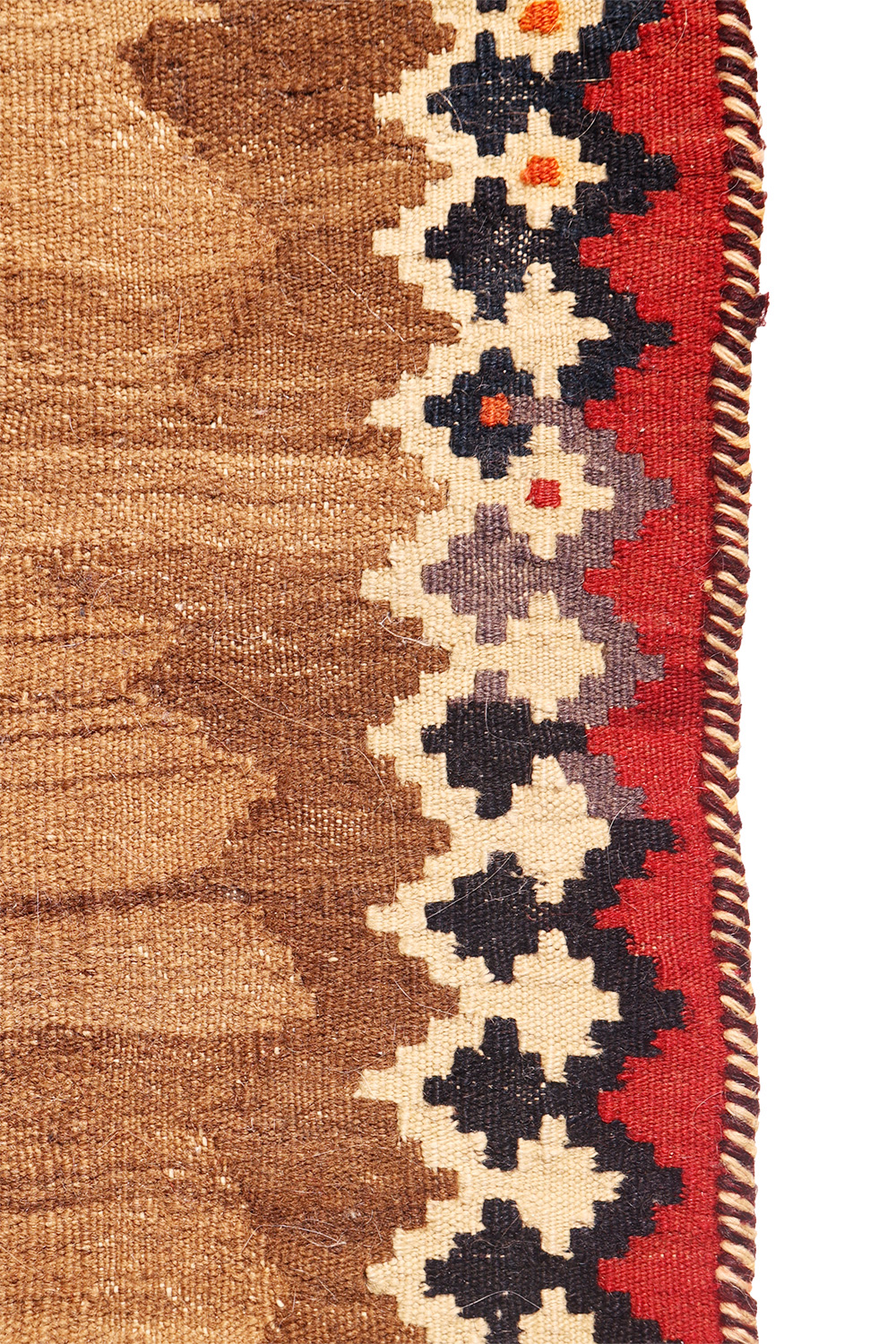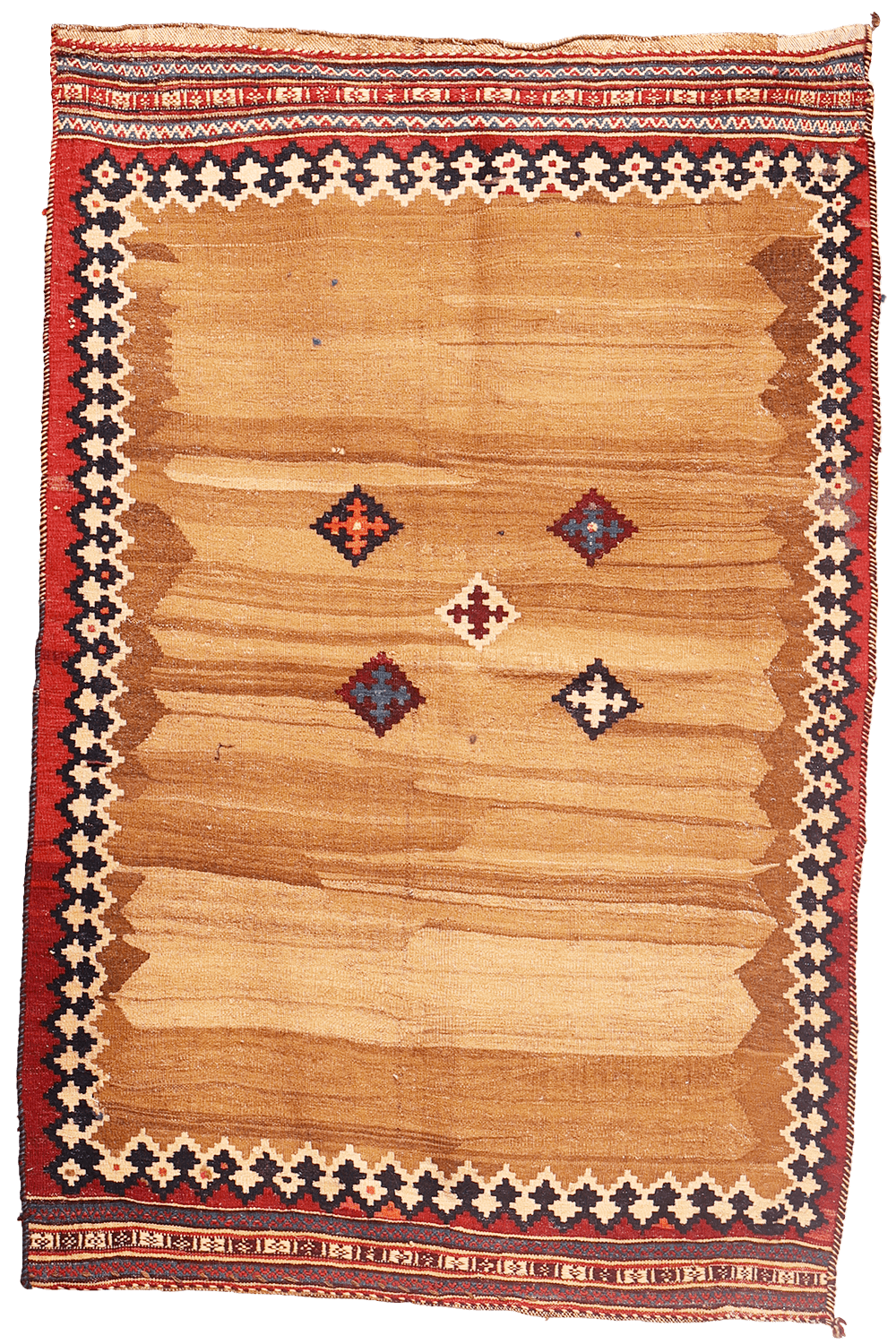1,200.00 €
Antique Collector’s Sofreh / Kilim – A Rare Textile for Bread-Making
This exceptional antique sofreh or kilim, traditionally used to knead dough for bread-making, is a true collector’s piece. It features one of the most striking examples of abrash—the subtle, organic shifts in color that occur in naturally dyed wool—ever seen in a main field. The rich brown background may even be camel wool, lending it a distinctive texture and hue.
Its minimalist field is intentionally sparse, with five small motifs artfully placed to seem as if they are floating against the depth of the abrash. This enhances the visual drama of the piece while maintaining a serene and balanced composition.
The dyes used are all natural, and the weaving is exceptionally fine. The wool has been spun with extraordinary skill, resulting in a soft, high-quality texture. Both end borders are intricately woven, showcasing the weaver’s craftsmanship and attention to detail.
This is not just a utilitarian textile—it is a rare and beautiful object, ideal for serious collectors of antique kilims and sofreh textiles.
Material: 100% hand-spun sheep wool
Size: 150×106 cms
Origin: Qashqai tribe, Iran
Date of weaving: 1920s
Sofrehs take their name from the Farsi (Persian) word for cloth and are used for several functions connected with preparing and eating food. Eating cloths are normally referred to simply as sofrehs and vary enormously in size-from small, rectangular mats for personal use to extremelly long, narrow runners for communal eating. They are woven in several standard techniques, including alternating bands of kilim and pile rug, and produced by a number of nomadic and tribal weavers in Iran, Afghanistan, Central Asia and to a lesser degree, elsewhere.
1 in stock
Additional information
| Weight | 2.6 kg |
|---|
Subscribe and receive the lastest news
